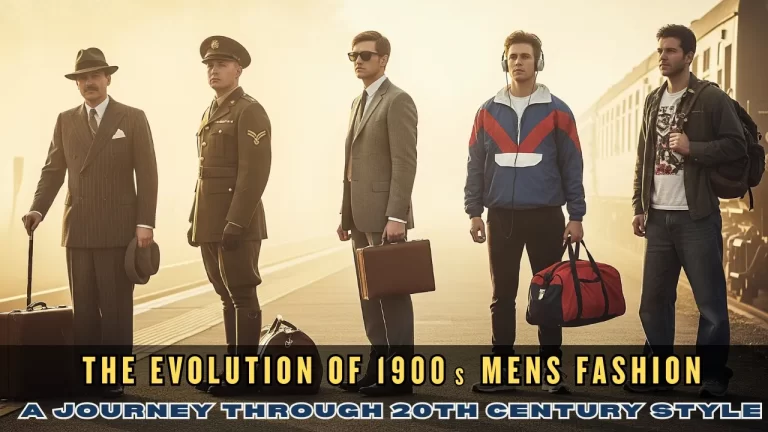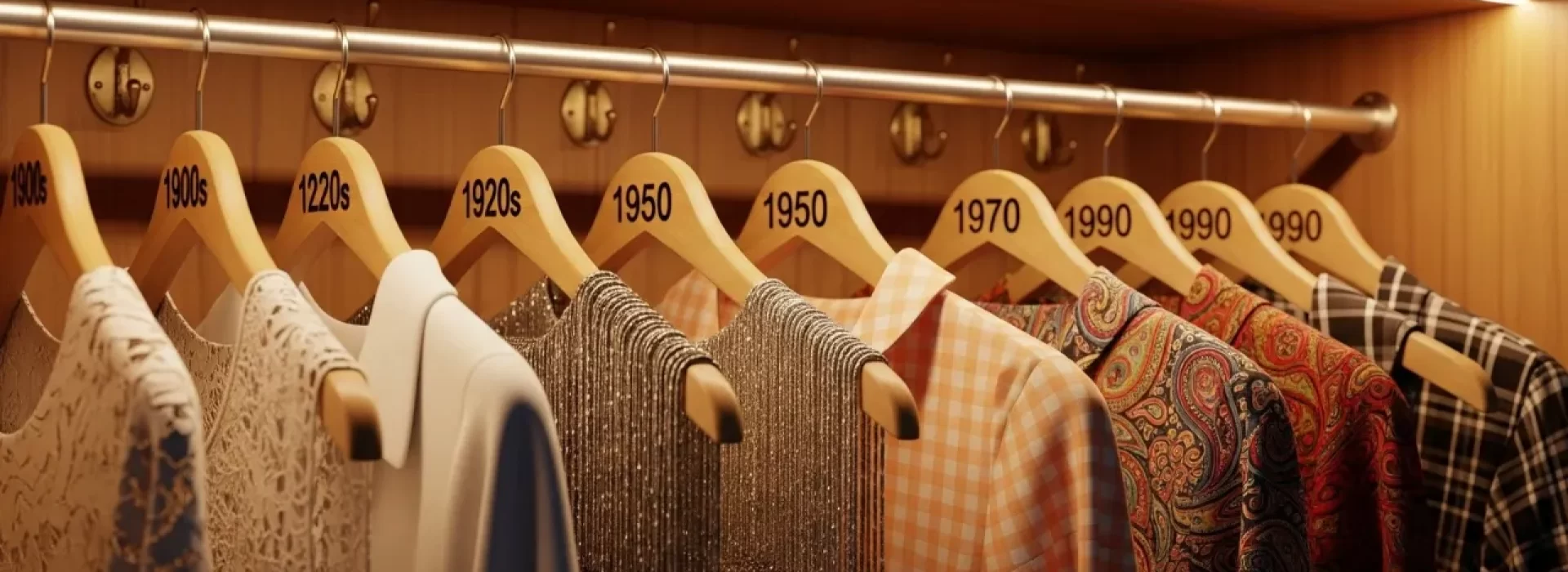
1900s Womens Fashion by Decade: The Good, the Bad & the Bold
If you’ve ever stared at a photo from the early 1900s and thought, “How did they even breathe in that thing?”.. you’re not alone. 1900s womens fashion wasn’t just about corsets and lace. It was the starting point of a century-long evolution that would swing wildly from strict silhouettes to bold rebellion, from wartime austerity to disco shimmer. And every decade left a unique stamp on what we wear.. and why.
In this post, we’ll explore how women’s fashion changed through each decade of the 20th century. Whether you’re completely new to vintage style or simply nostalgic for your grandma’s closet, this decade-by-decade breakdown will reveal what was iconic, what missed the mark, and what still inspires designers and dressers today.
So let’s step into the time machine and start in the 1900s.. the moment style truly began to shift.
Why the 1900s Were a Turning Point in Women’s Fashion
At the start of the 20th century, women were still bound.. literally and figuratively.. by the restrictive fashion ideals of the Victorian era. Floor-length skirts, tight corsets, high collars, and elaborate hats weren’t just trends; they were expectations.
But something was brewing. Industrialization, the suffrage movement, and a slowly expanding middle class were reshaping how women worked, moved, and expressed themselves. This was the pivot point between fashion as armor and fashion as identity.
From Corsets to Comfort: The Fashion Identity Shift of the 20th Century
In the 1900s, the S-curve corset defined the female silhouette. It pushed the chest forward, the hips back, and gave women an unnatural sway.. something between a peacock and a pain-filled stroll. Dresses flowed with embellishment and elegance, often made of silk and lace with layered skirts.
But even within this rigidity, designers like Paul Poiret were already breaking rules. He eliminated corsets from some of his designs and introduced a looser silhouette that shocked society.. and foreshadowed things to come.
By the 1920s, the idea that fashion had to be functional was starting to replace the notion that it had to be oppressive.
How Society Shaped Style (and Vice Versa)
Fashion didn’t evolve in a vacuum. Wars, political movements, youth culture, film, and music all changed the way women dressed.. and how they were allowed to.
For example, during World War II, practicality dominated because fabric was rationed. In the ’60s and ’70s, rebellion and cultural freedom dictated style. And in the ’90s, music.. especially hip hop.. reclaimed fashion for women of all backgrounds and body types.
Each decade brought a new set of rules, and a new group willing to break them.
The “Good, the Bad, and the Bold” Approach to Fashion Judgment
Let’s be clear: what’s “good” or “bad” is subjective. But if we’re being honest, some trends didn’t exactly age well (looking at you, early 2000s low-rise jeans). Others.. like the clean silhouettes of the 1930s or bold power suits of the 1980s.. still influence the runway and streetwear today.
In this blog, we’ll call it like we see it: which decade nailed the balance between style and purpose, and which one maybe tried a little too hard.
Understanding Nostalgia vs. Historic Context
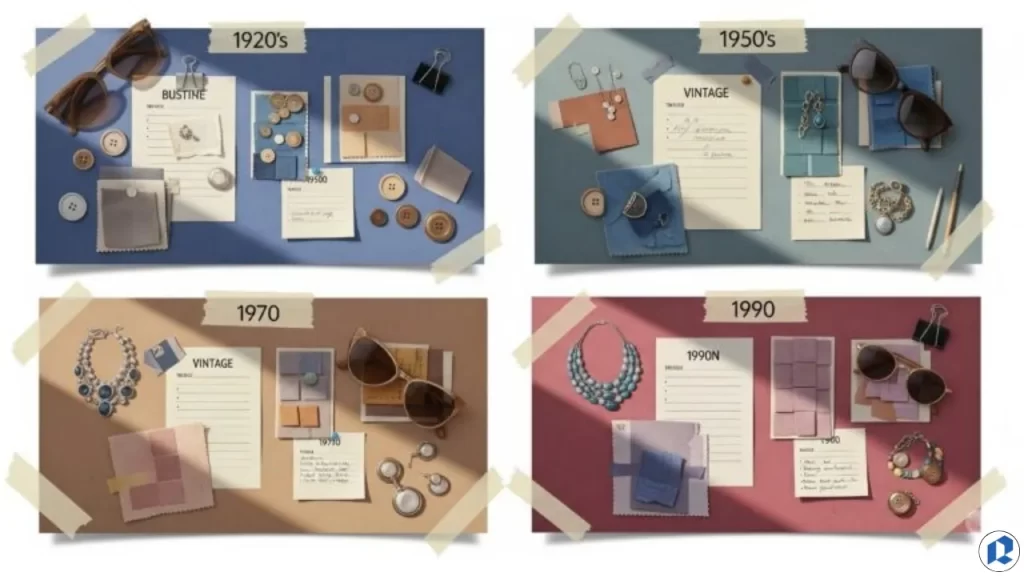
It’s tempting to romanticize the past. The polished gloves, the waist-cinched dresses, the glamour of old Hollywood. But fashion history is layered with social commentary, economic strain, and even pain.
Nostalgia helps us connect with vintage style, but it’s important to understand the context. That’s what this post aims to do.. tell you what fashion looked like, but also why it looked that way.
The Rise of 20th Century Women’s Fashion in Pop Culture Memory
Think of the 20th century as a fashion playlist. Every decade is a track with its own beat and mood. And whether it’s 1920s womens fashion featured in The Great Gatsby, or the bold prints of the 1970s in That ‘70s Show, we keep revisiting these eras again and again.
Pop culture keeps vintage fashion alive.. but to understand it properly, we need to break it down piece by piece.
1900s Womens Fashion: Edwardian Elegance and the Start of Modern Silhouettes
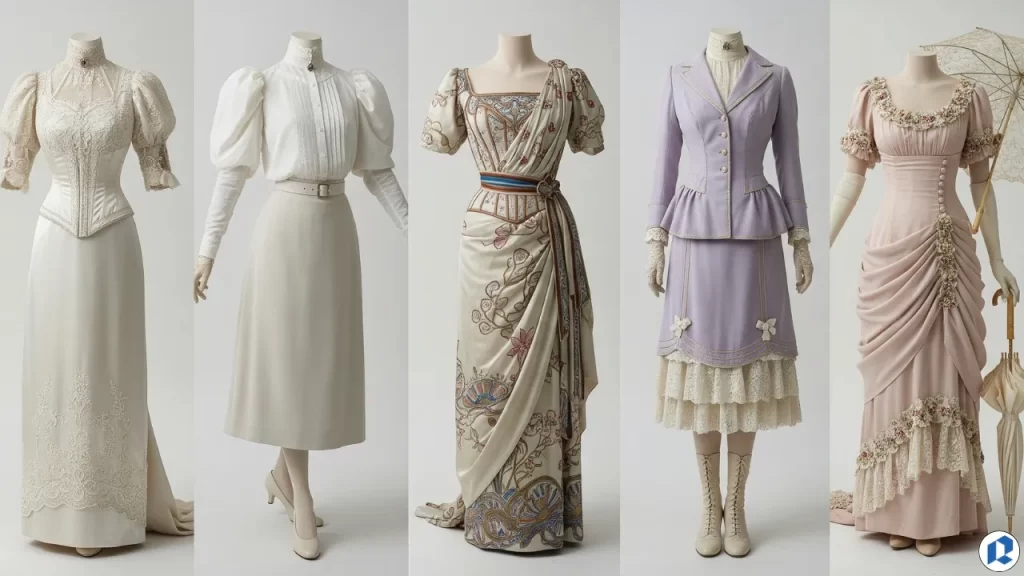
The early 1900s Womens Fashion belonged to the Edwardian era, and fashion was all about luxury and formality. The Gibson Girl became the ideal.. an independent yet elegant image with upswept hair, puffed sleeves, and impossibly tiny waists.
Fabrics were luxurious.. satin, silk, lace.. and outfits were adorned with frills, embroidery, and trains. Parasols weren’t just props; they were vital accessories.
The Good: The craftsmanship. Clothes were made to last and tailored to perfection.
The Bad: Restriction. Breathing, walking, and existing in those outfits was a challenge.
The Bold: Poiret’s corset-less dresses were the first real rebellion of the century.
1920 Womens Fashion: Flappers, Fringe, and Feminine Rebellion
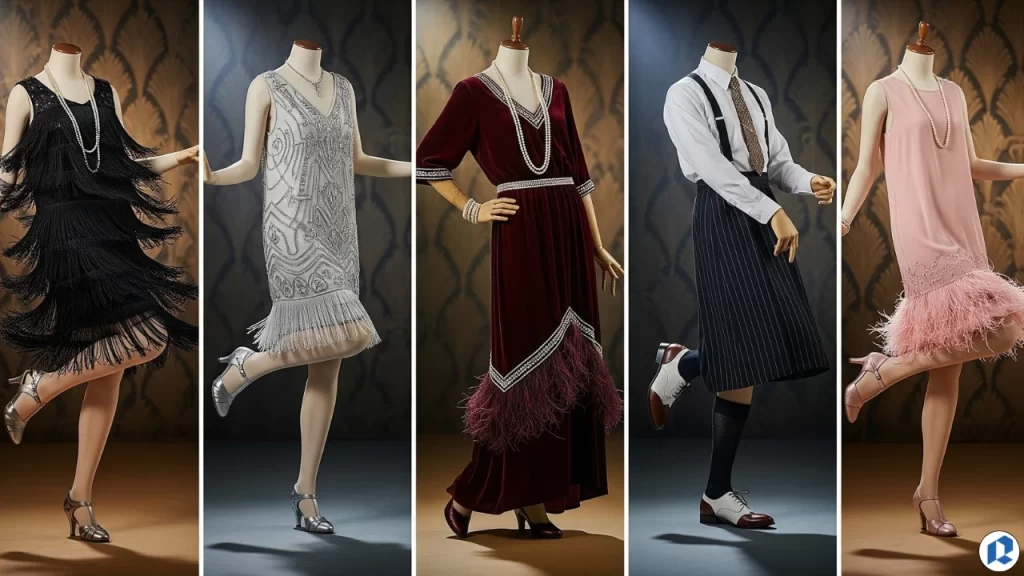
If the 1900s whispered change, the 1920s screamed it. Post-WWI liberation found its voice in short bob cuts, dropped waistlines, and fringe-filled frocks. The flapper look wasn’t just a trend.. it was a protest.
Women danced, smoked, and voted. And their clothes moved with them. Beaded evening dresses, cloche hats, and sheer stockings became symbols of progress.
The Good: Freedom. Movement was finally fashionable.
The Bad: Uniformity. Not everyone wanted to be a flapper, but alternatives were limited.
The Bold: The complete dismissal of corsets and introduction of jazz-age glamour.
1930s Womens Fashion: Hollywood Glamour and Depression-Era Practicality
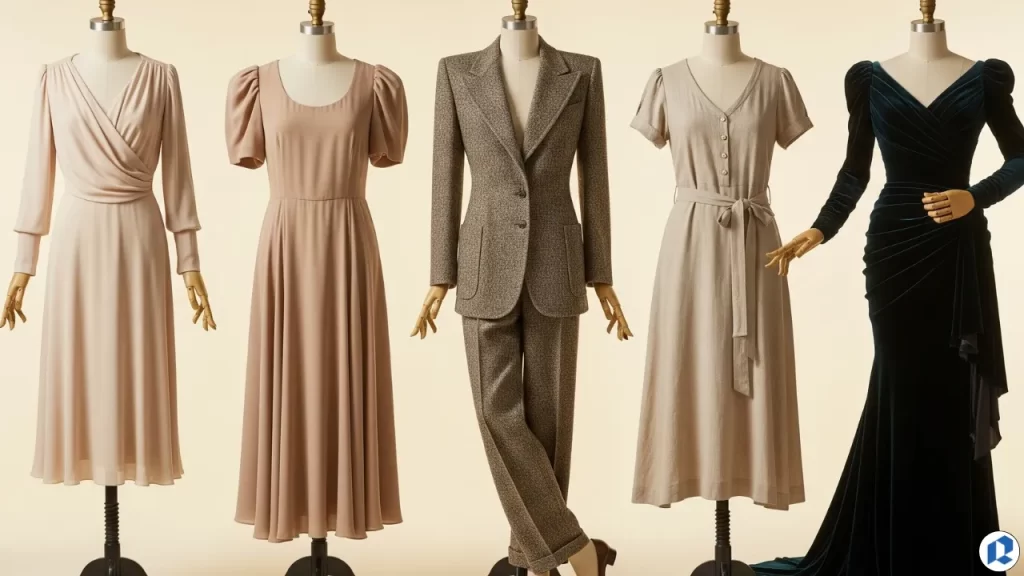
The 1930s walked a fine line between escapism and survival. The Great Depression was brutal, but Hollywood offered a glittering escape. Starlets like Greta Garbo and Jean Harlow influenced everyday fashion more than ever.
1930 womens fashion had bias-cut gowns that hugged the body, puffed shoulders, and silk dresses ruled. Suits became common for working women. And makeup became bold.. even if budgets were tight.
The Good: Function met form.. flattering but wearable styles.
The Bad: Exclusivity. The glam look wasn’t attainable for all.
The Bold: The silver screen’s grip on fashion’s imagination.
1940s Womens Fashion: Wartime Utility Meets Feminine Strength
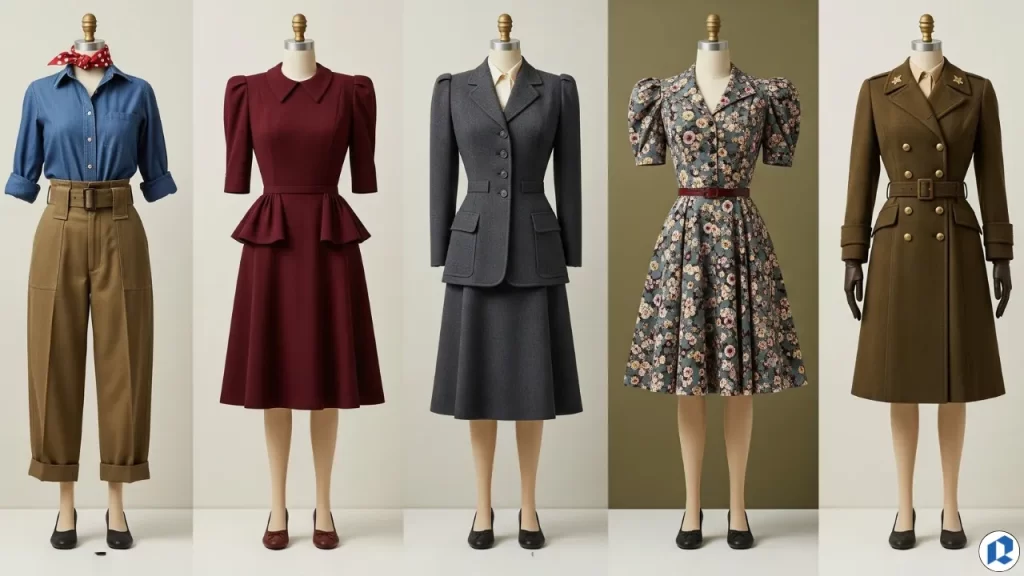
With men off at war, women stepped into factories.. and into trousers. The 1940 womens fashion saw the rise of utility fashion: shorter hemlines, shoulder pads, and practical cuts. Rosie the Riveter didn’t just roll up her sleeves.. she inspired a new kind of wardrobe.
Yet femininity didn’t disappear. Dresses with peplum waists, tea-length skirts, and structured silhouettes were everywhere. Accessories like hats and gloves were still in, even in hard times.
The Good: The fashion empowered functionality without losing elegance.
The Bad: Fabric rations meant less room for style innovation.
The Bold: Women in slacks.. finally.
1950s Womens Fashion: The Hourglass Ideal and Postwar Domesticity
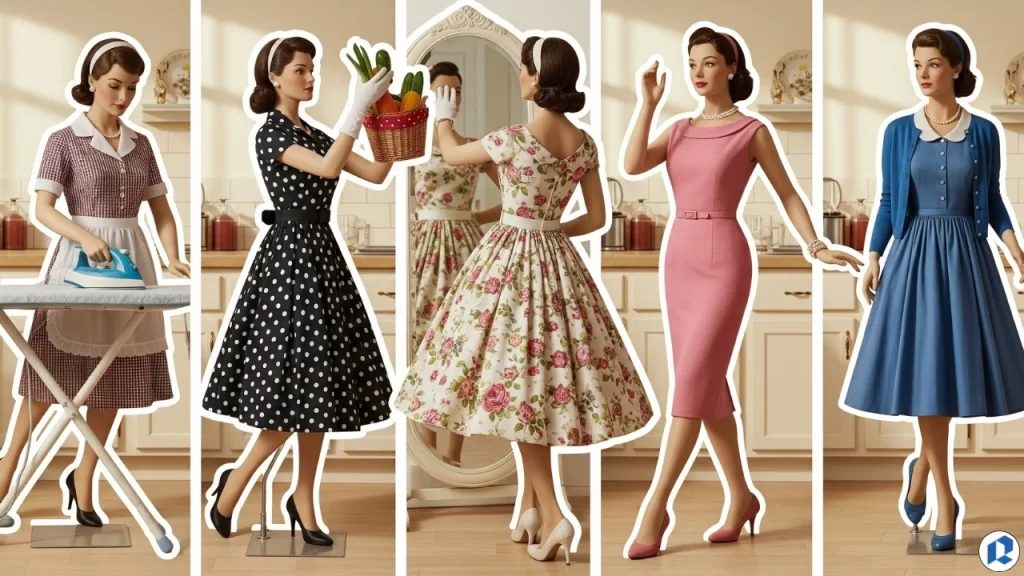
Welcome to the age of the cinched waist and full skirt. Think Dior’s “New Look”, think June Cleaver. Postwar fashion in the 1950s swung back to hyper-femininity.. ironic, considering women had just proven their capability in the workforce.
1950 fashion womens had gloves, petticoats, pearls, and kitten heels that ruled suburbia. Everything was polished and pressed. The goal? Look ladylike.. always.
The Good: Grace and polish defined the style.
The Bad: A step backward in gender messaging.
The Bold: The volume and theatricality of silhouette and styling.
1960s Womens Fashion: Mod Culture, Rebellion, and Swinging London
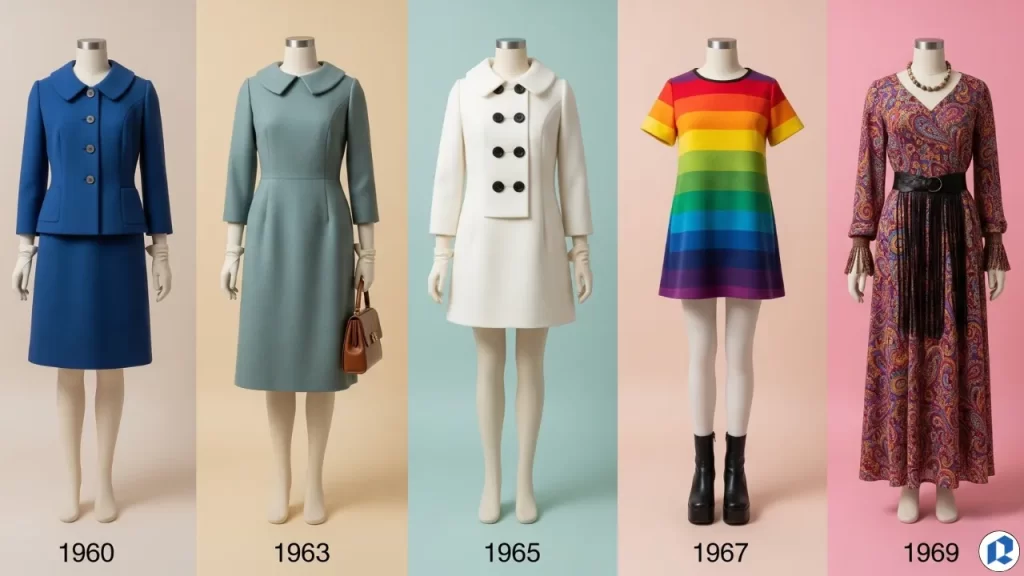
Womens 60s fashion was wild.. in the best way. Fashion became youth-led, fast-moving, and globally inspired. From Twiggy’s mod mini dresses to Jackie Kennedy’s Chanel suits, style reflected both rebellion and refinement.
60s womens fashion had colors that were bold, skirts were shorter than ever, and eye makeup took center stage. London was the capital of cool, and style became an extension of identity like never before. Womens fashion in 1960s was something truly unique.
The Good: Individualism became fashionable.
The Bad: Some trends felt costume-like and short-lived.
The Bold: Mini skirts, go-go boots, and psychedelic prints.
1970s Womens Fashion: Bohemian Freedom, Disco Shine, and Androgyny
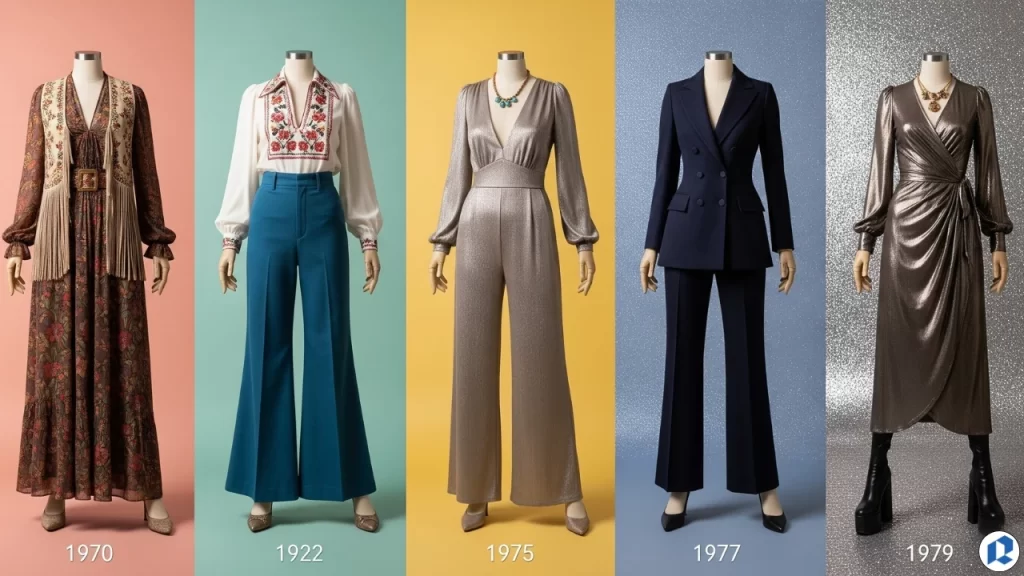
By the time the 1970s rolled around, fashion had become a full-blown playground of personal expression. There was no single “look”.. and that was exactly the point. On one end of the spectrum, you had boho fashion: flowy maxi dresses, peasant blouses, natural fabrics, and floral prints. On the other, you had disco fashion: sequined jumpsuits, lamé fabrics, halter tops, and towering platform shoes. And hovering between it all? Gender-bending androgyny that made room for pantsuits, bell-bottoms, and unisex styling.
1970 fashion womens led to cultural shifts like second-wave feminism, the sexual revolution. And the explosion of global pop music made sure fashion followed the times rather than led them.
The Good: Personal freedom in fashion was finally mainstream.
The Bad: A lack of cohesion made it hard to define “good taste.”
The Bold: Everything.. colors, cuts, textures.. was louder than ever.
1980s Womens Fashion: Power Dressing and Maximalist Energy
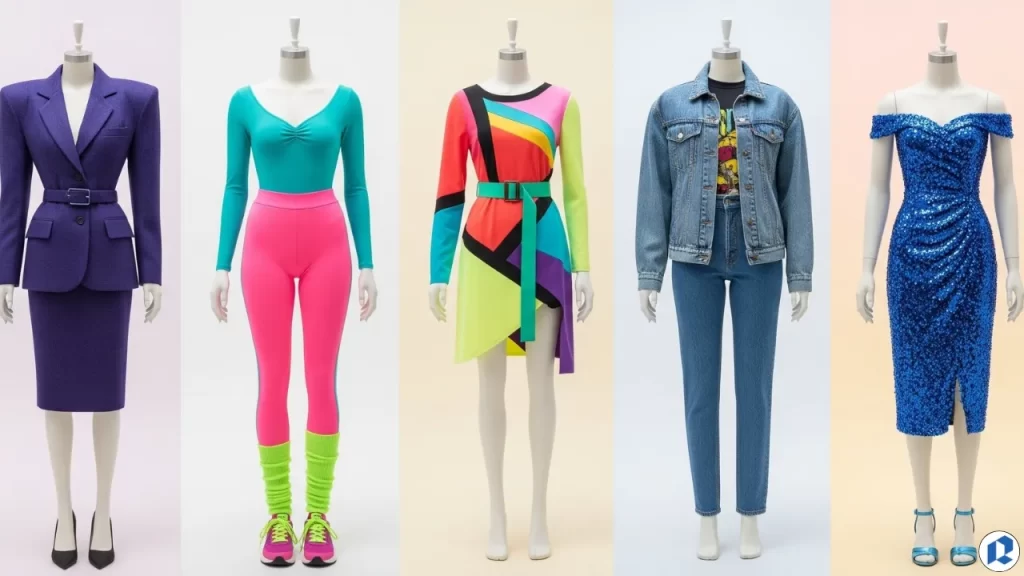
There are two types of people when it comes to 1980s womens fashion.. those who loved the shoulder pads, and those who survived them. The ’80s brought fashion to the boardroom with power suits, high-waisted trousers, and blazers designed to scream authority.
At the same time, MTV culture introduced bold neons, oversized accessories, and experimental hairstyles. This was the decade of “more is more”, and no one apologized for it.
In the 1960s fashion womens athleisure also started to creep in, with leg warmers, headbands, and spandex blending gym wear with streetwear.
The Good: Confidence became fashionable.. literally.
The Bad: Excess for the sake of excess sometimes missed the mark.
The Bold: Bright color blocking, structured suits, and unapologetic glam.
1990s Womens Fashion: Hip Hop, Grunge, and Minimalist Cool
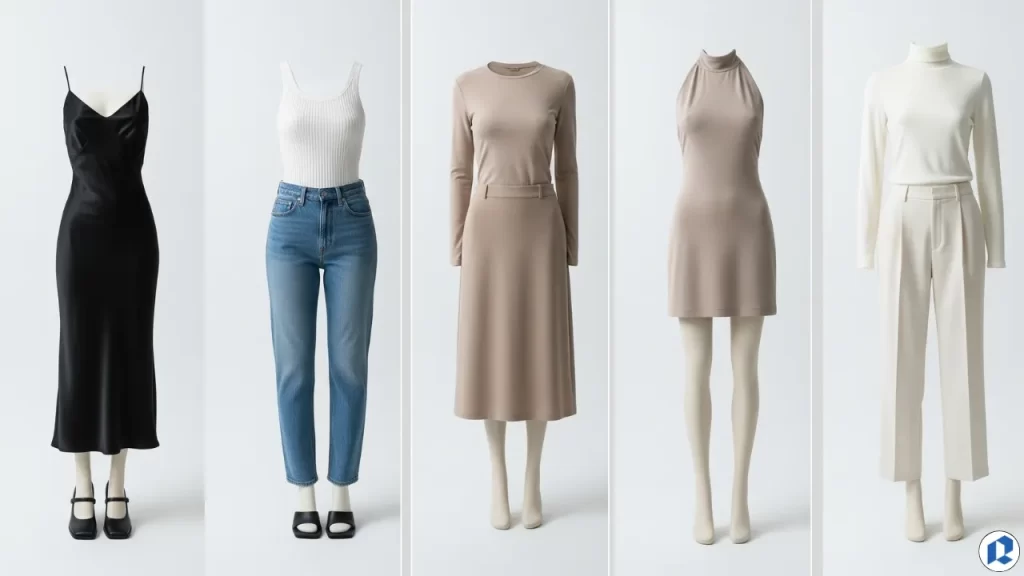
The 1990s were a contradiction. On one side, you had grunge.. flannel shirts, ripped jeans, combat boots, and a disdain for anything polished. On the other, womens 90s hip hop fashion emerged, particularly in urban and Black communities, with oversized denim, gold chains, crop tops, and sneakers defining a whole new standard of cool.
Then came minimalism: slip dresses, monochrome tones, spaghetti straps, and barely-there makeup. This era gave us icons like Kate Moss, TLC, Aaliyah, and Gwen Stefani.. each representing a different slice of fashion’s fragmented landscape.
The Good: Fashion finally reflected real diversity in mood and background.
The Bad: The heroin-chic trend promoted unhealthy body images.
The Bold: Baggy jeans, plaid overload, and gender-fluid silhouettes.
2000s Womens Fashion: Y2K Chaos, Pop Culture Clones, and Digital Influence
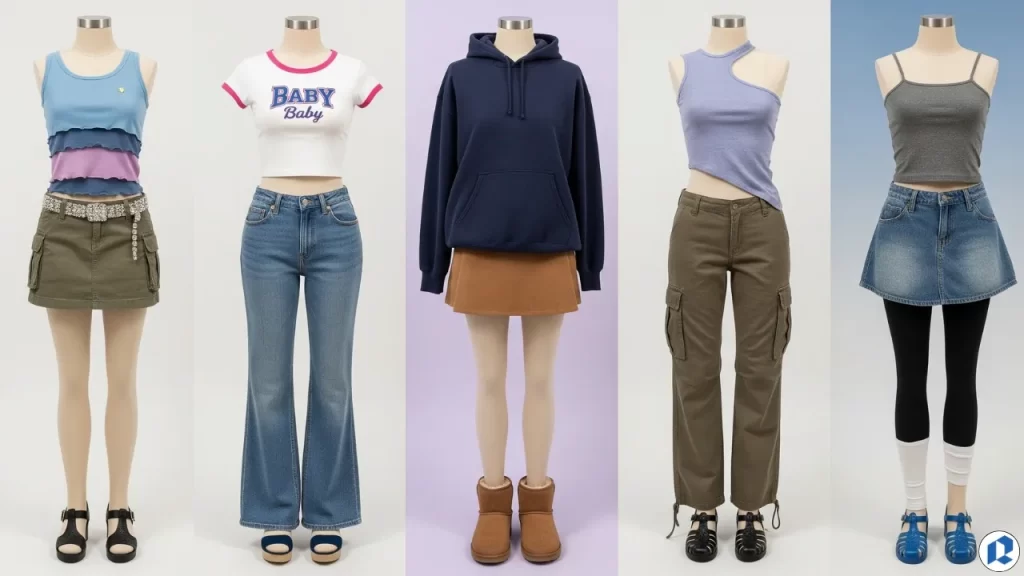
There’s no polite way to put this: womens 2000s fashion was a mess.. and a glorious one. This was the decade of low-rise jeans, rhinestone everything, and visible thongs (remember the “whale tail”?).
Thanks to celebrities like Britney Spears, Paris Hilton, and the early reality TV scene, fashion in the 2000s was hyper-commercialized. Style wasn’t just what you wore.. it was what you downloaded, copied, and posted.
We saw a sharp divide: velour tracksuits and butterfly clips on one side, scene kids in fingerless gloves and studded belts on the other.
The Good: Bold experimentation and the start of internet fashion trends.
The Bad: Over-branding and lack of originality.
The Bold: Micro minis, trucker hats, and daring body-baring outfits.
What Didn’t Age Well: Fashion Fails by the Decade
It’s fun to look back, but let’s be real.. some of these trends should stay in the past. Every decade had its regrettable moments.
- 1900s: S-curve corsets that distorted posture
- 1920s: Headbands that did nothing but pinch foreheads
- 1950s: Petticoats so wide you couldn’t sit comfortably
- 1980s: Shoulder pads bigger than your head
- 2000s: Belts over tank tops (why, though?)
These weren’t just fashion mistakes.. they were symptoms of a culture trying too hard, or not knowing when to stop.
What Still Inspires: Legacy Styles We Still Love
Despite the occasional flop, 1900s womens fashion and its century-long evolution left us with endless inspiration:
- 1920s drop-waist dresses continue to inspire evening wear
- 1950s tea-length dresses reappear every wedding season
- 1970s maxi dresses and earthy tones dominate boho brands
- 1990s slip dresses and dad sneakers are back on runways
- 2000s Y2K nostalgia is now big with Gen Z
The fashion cycle always spins back. What’s old becomes new.. just with better tailoring and (thankfully) less glitter glue.
Why Understanding Past Fashion Helps Shape the Future
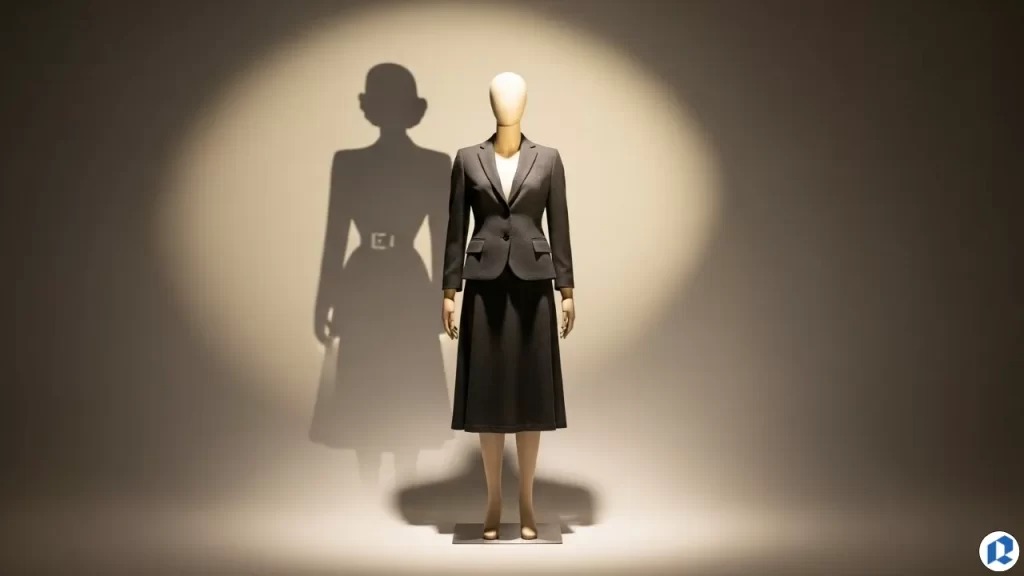
Here’s the thing: fashion isn’t just about looking good. It reflects our priorities, our politics, and even our pain. Learning how women’s clothing shifted across the 20th century (1900s Womens Fashion) shows us how much we’ve grown.. and how far we still have to go.
Studying past trends also teaches restraint. Designers today pull references from the past, remixing silhouettes, prints, and ideas to say something modern. Without understanding what came before, fashion risks becoming shallow.
Whether you’re designing a line, shopping vintage, or just curious.. understanding the evolution of 20th century women’s fashion makes you more aware of what clothes really mean.
The Final Era: What Fashion Told Us About Women’s Roles
As we wrapped up the 20th century and stepped into the 2000s, something had clearly shifted. Fashion was no longer just a mirror.. it became a megaphone. Social justice movements, gender identity, and body positivity were now woven directly into what women wore. Fashion wasn’t just about style anymore; it was about statements.
While the earlier decades often reflected what society expected from women, the late 1990s and 2000s saw women reclaiming that narrative. Clothing became armor, self-expression, and celebration. And though not every trend aged gracefully, the spirit of reinvention defined the century.
Fashion by the Decade: Why the Good, the Bad & the Bold Still Matter
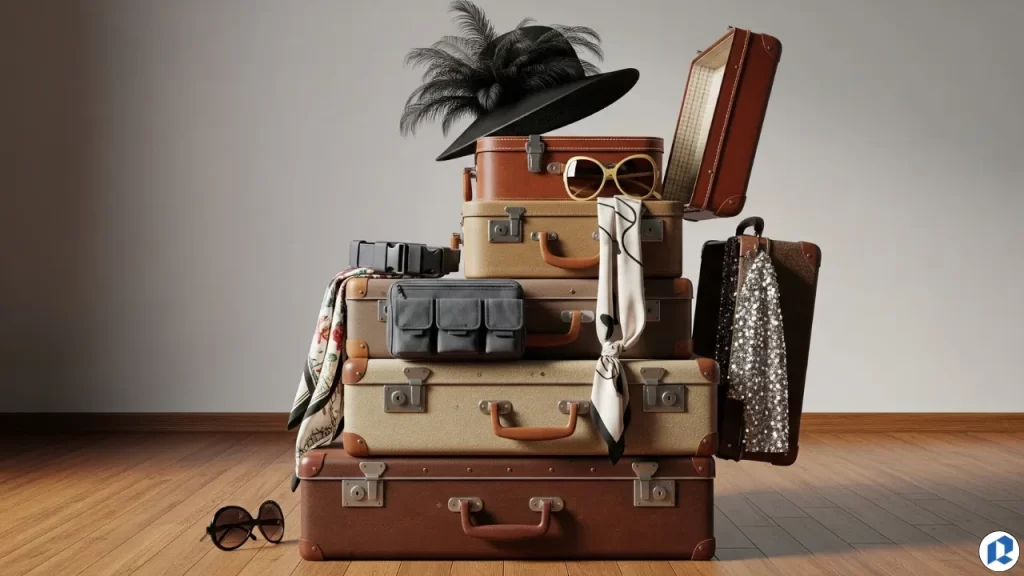
Each decade of 1900s womens fashion delivered more than just clothes. It delivered commentary.
- The 1900s showed us restraint and the birth of modern tailoring.
- The 1920s flapped their way into freedom.
- The 1940s taught us how necessity breeds innovation.
- The 1960s reminded us that fashion can drive cultural shifts.
- The 1990s showed us how diverse and fragmented identity could be.. and that’s okay.
Good trends stuck. Bad ones faded (mostly). But the bold? They’re the ones that never really left us.
What RYZEAL Thinks About 1900s Womens Fashion Through Time
At RYZEAL SOURCING, we believe fashion is more than fabric.. it’s history, identity, and storytelling stitched together. The transformation of women’s fashion from the 1900s to the 2000s inspires how we think about apparel today. From structured silhouettes to free-flowing styles, every trend teaches us something about how people lived, worked, and expressed themselves.
As a sourcing partner, we always look at fashion through this wider lens.. because style isn’t just about aesthetics. It’s about meaning. And understanding where fashion has been helps us shape where it goes next.

Costing in Garment Industry – How Buyers and Factories Calculate Pricing Effectively
